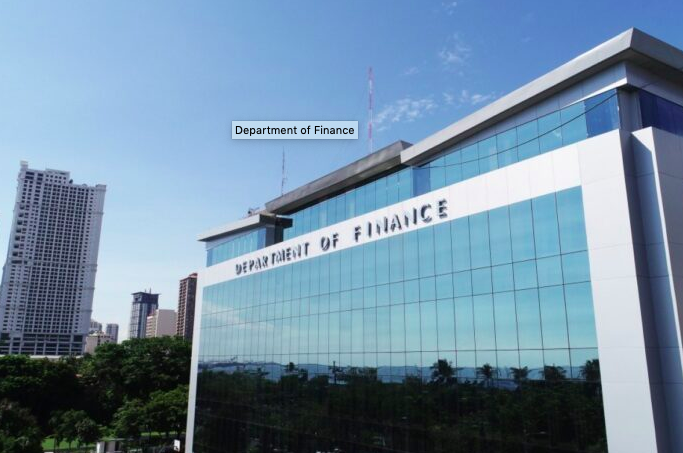Global investment firm Goldman Sachs has expressed confidence over the Philippines’ resilience and strong positioning against its credit rating peers in recovering from the pandemic damage, on the back of the country’s low debt burden, expected current account surplus and projected robust and sustainable growth rebound over the next two years.
It said Moody’s Investor Service’s affirmation of the Philippines’ ‘Baa2’ rating with ‘stable’ outlook is a vote of confidence in the country’s fiscal and external buffers plus policy flexibility during crisis, and which this investment firm attributed to the “astute management” by President Duterte’s economic team led by Finance Secretary Carlos Dominguez III.
Todd Leland, Goldman Sachs president for Asia ex-Japan, said in a letter to Dominguez that the investment firm is “delighted to see Moody’s (Investor Service) affirmation of its Republic of the Philippines (ROP)’s stable Baa2 rating” as reflected in the debt watcher’s latest credit analysis report on the country.
“This is reflective of ROP’s relative resilience in view of Moody’s negative rating action on 58 sovereigns globally since the start of the pandemic in March 2020. We believe that this rating affirmation is a vote of confidence on ROP’s fiscal and external buffers, and policy flexibility during crisis periods, thanks to the astute management by its economic team, under your very able leadership,” Leland said in his letter to Dominguez.
Leland said Moody’s has agreed with Goldman Sach’s assessment “of ROP’s strong positioning versus its rating peers globally.”
He said Goldman Sachs based its positive assessment on the Philippines on three factors: 1) “ROP has one of the lowest sovereign debt burden and strongest debt affordability, as measured by its general government debt and interest payments as a share of GDP (gross domestic product)”; 2) “the Philippines is expected to be the only Baa2 country to see a current account surplus this year and next”; and 3) “GDP growth is expected to rebound strongly and sustainably, averaging above 6 percent over the next two years compared to under 5 percent for the Baa median.”
In its latest credit analysis on the Philippines, Moody’s said it expects the country to outperform most of the sovereigns it rates in terms of average growth up to 2025.
The international debt watcher cited its 10-year average growth projection for the Philippines for the period 2016 to 2025 at 4.8 percent—despite the sharp contraction last year resulting from the pandemic.
“Although this 10-year average includes the steep recession in 2020 associated with the global coronavirus pandemic, we expect the Philippines to grow faster than nearly 85 percent of rated sovereigns,” Moody’s said in the report released on July 26, 2021.
The debt watcher believes the recession in 2020 does not represent a material weaking of the Philippines’ growth prospects.
For 2021 and 2022, the rating agency placed its growth forecasts for the Philippines at 5.8 percent and 6.5 percent, respectively. It expects the Philippines to restore full-year GDP growth to 2019 levels in 2022, ahead of rating peers like Panama, Uruguay, and Mauritius which are expected to revert to pre-pandemic growth levels only in 2023 or beyond.
Higher government spending, such as on infrastructure, will be among the growth drivers for the Philippines this year and next, it said.
To accelerate economic recovery, Moody’s highlighted the importance of restoring business confidence to revive private domestic investments.
The country also benefits from a growing working-age population, which significantly contributes to potential economic growth, Moody’s said. The Philippines’ median age is around 25 years old, compared with more than 30 years old in Malaysia and Vietnam, and nearly 40 years old in Thailand.
Moody’s last formally affirmed the Philippines’ “Baa2” rating and the stable outlook in July 2020. Following the review meetings conducted in June this year by its analysts with resource persons from the government and the private sector, Moody’s regarded the Philippines’ ‘Baa2’ rating and the stable outlook as well placed.
“The Philippines Baa2 rating and stable outlook remain intact …. We have already incorporated in our assessment many of the developments that transpired over the past year including the negative impact of the pandemic shock,” said Christian de Guzman, Moody’s Senior Vice President and lead sovereign analyst for the Philippines.
‘Baa2’ is one notch above the minimum investment grade. The “stable” outlook indicates that the upside and downside risks are balanced and that the rating is unlikely to change within the short term.
Reacting to the latest commentary from Moody’s, Dominguez has said that “throughout the pandemic, the Philippines has endeavored to strike a balance between the need to squarely address the crisis—such as by providing relief to the most vulnerable sectors and boosting capacity of the healthcare system—and observing fiscal discipline so that any rise in expenditure will not result to an unmanageable debt situation in the years to come.
“Moreover, the government has demonstrated commitment to reform even as its hands are full with crisis-response endeavors. The new CREATE (Corporate Recovery and Tax Incentives for Enterprises) law, as well as the economic reform bills being pushed in Congress that will further open the economy to job-generating foreign investments, will help build a future that provides better living standards for Filipinos.
“Given all this, we are confident of a strong rebound that will place the Philippines back to the path of a more robust and inclusive economic growth,” Dominguez sad. (DOF)


